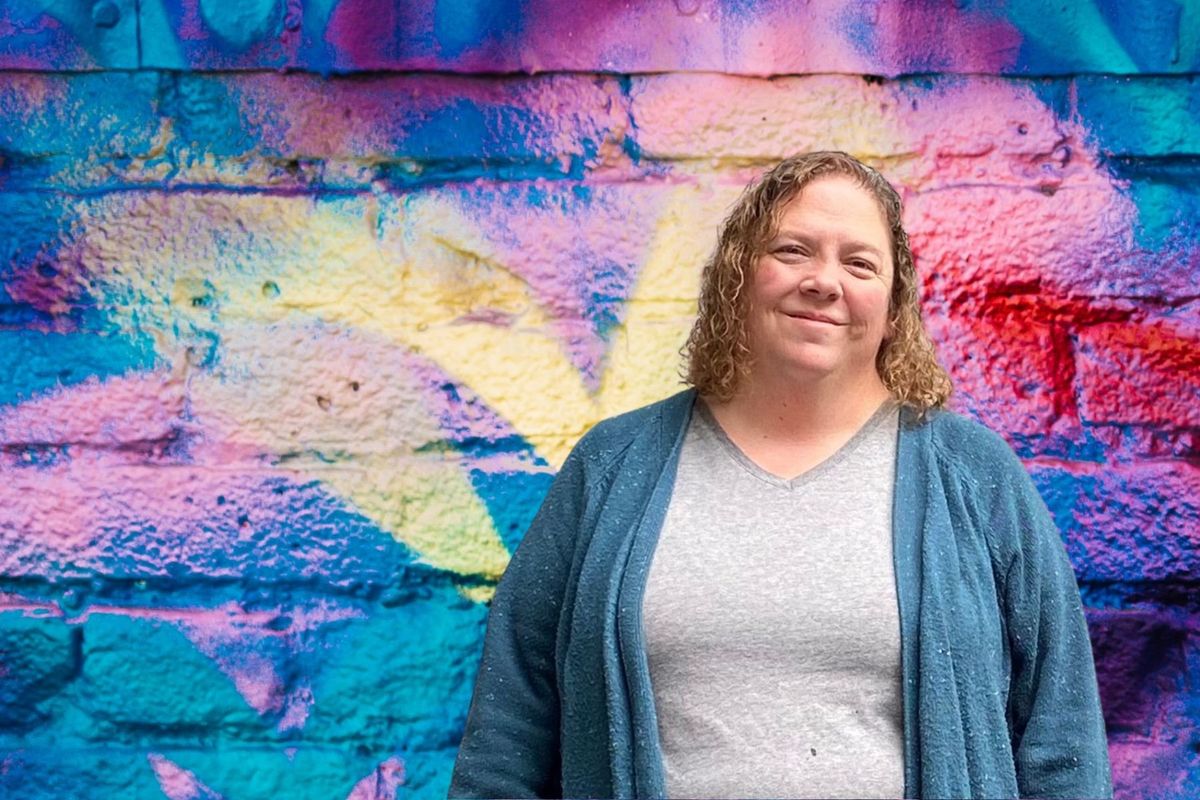On the first day of my trauma retreat the therapist went directly from “Do you prefer to cook or eat takeout?” to “Let’s make a list of the worst things that have ever happened to you.”
I knew from the intake process to anticipate this exercise as prep for eye movement desensitization and reprocessing (EMDR) therapy, and had partially rehearsed my answers. My list of worst things included my best friend being killed by a falling tree, my dad’s death, my recent divorce and my sister’s suicide. My mom was her own category of worst things, with a separate index of our fraught relationship before she died.
Prior to this retreat, I’d spent countless hours talking about those life events with my long-term therapist. We’d also done EMDR a few times, and it sparked my curiosity about learning how to provide it myself. But it was important to me to process more of my own trauma first. It didn’t feel right to ask my clients to do something in our sessions that I hadn’t experienced myself.
EMDR helps people process painful memories and remove the sting from them, so we’re likely to notice and remember that the difficult thing happened, but it won’t interrupt our ability to function the way unresolved trauma memories often do.
Overall, I knew that the process involved less talking than traditional therapy. What I wasn’t prepared for is how scripted the EMDR protocol is. During each session, for each memory being processed, the therapist asked the same questions: What image represents the worst part of the memory? What emotions accompany that image? How bad was the feeling on a scale from zero to 10, and where did I feel that in my body?
My holding places were my gut, the center of my chest and my shoulders.
The cognitive part of my brain fought this process. It wanted to understand what was happening and wasn’t always comfortable to let the other parts of my brain take the lead.
Traditionally, EMDR involves a therapist moving their fingers back and forth across the client’s line of vision, with the client moving only their eyes to follow along. But my brain couldn’t focus on the image I was processing while following the therapist’s hand with my eyes. Instead, my therapist offered me small hand-held receivers that softly buzzed, alternating between my left and right hands. This allowed me to concentrate on the internal images.
“Ok, we’re going to start the processing now. Focus on the image you described and the words you identified. Ready?” I nodded, and she began the buzzing. After about 30 alternating sets, she stopped to ask me, “What came up?”
Sometimes I’d be deeper in the painful memory, remembering more details about the night my sister died or my best friend’s funeral. Other times I’d try to describe what was happening. “It’s like those old cartoons where Bugs Bunny jumped into a little cart in a mine and away he’d go, zipping through the mine,” I said. “This feels like that, zooming around my brain and nervous system. And just like in that mine cart, there’s no steering wheel. I just go wherever it takes me.”
Her response was always, “Go with that.”
We did 20 or 30 intervals at a time of me processing and her asking me, “What came up?” My most emotional responses came in the form of questions. “Why would she do that?” or “Why does everyone leave?” I didn’t always notice when my tears started to flow, but I cried many times during the process.
After the retreat, I returned home feeling significant relief from the effects of those worst moments of my life. For example, one of the most painful parts of my sister’s death was discovering her dead in her apartment. Before EMDR, those images in my mind were vivid and cinematic, as if they’d just happened yesterday, and they would cause me to shut down in a panic whenever I thought of them. After EMDR, when those memories come up, I can breathe around them, remember my sister and feel the loss of her, and also keep going in my day. I can acknowledge them without feeling re-traumatized. It still feels sad, and I remember how scared I was in that moment. But EMDR helped me process the memories and put them away in long-term storage where they don’t disrupt my life in the ways they used to.
After completing the therapy retreat as a client, I registered for clinical training and learned how to administer EMDR myself. Throughout the training, I was continually grateful for the personal trauma work I’d done with this model. Understanding this experience firsthand helps me explain to my clients what EMDR can do and how it works.
My clients tell me it helps them to know that I’ve been on both sides of the couch with EMDR. When waves of emotion come up for my clients as they confront traumatic memories, I can relate because I’ve surfed similar tides in my own memories. When clients feel frustrated at the repetitive nature of EMDR, I can empathize because I’ve been there myself.
It's been almost a year since my personal trauma retreat, and four months since I began practicing EMDR with my own clients. When I watch them move through their trauma, it connects me to the relief I felt after my retreat. Before EMDR, I thought I’d be stuck reacting to traumatic memories for the rest of my life. But it’s a huge relief to know that I’m not. And knowing that I can help set others free is a gift I’m so grateful I can give.
Have a Real Women, Real Stories of your own you want to share? Let us know.
Our Real Women, Real Stories are the authentic experiences of real-life women. The views, opinions and experiences shared in these stories are not endorsed by HealthyWomen and do not necessarily reflect the official policy or position of HealthyWomen.
- Childhood Trauma Can Lead to Chronic Pain ›
- What Is EMDR and How Can It Help Trauma Survivors? - HealthyWomen ›







